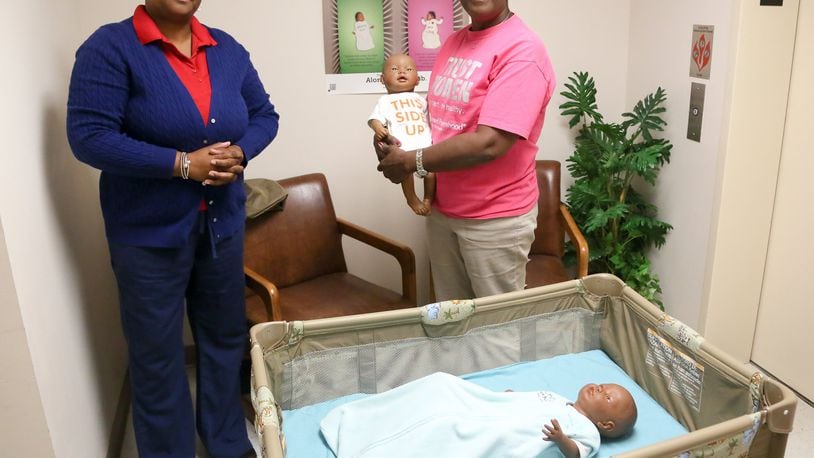The report details Ohio’s rankings as 35th in the nation for women’s health, 37th in infants’ health and 28th in children’s health.
“Both of those issues go hand-in hand,” said Jennifer Bailer, nursing director at the Butler County Health Department and co-leader of the Partnership to Reduce Infant Mortality, or PRIM. “ Things like housing, food availability, transportation, jobs, income, and education have such an impact on health — much more than medical care even.”
If a mother or pregnant woman lives in substandard housing and doesn’t have access to a full service grocery, it is very difficult to be healthy no matter how many programs are available, she said.
“Improving these conditions would really make an impact on the overall health of the people of Butler County, including moms and babies,” Bailer said.
Ohio’s infant mortality rate is alarming: 7.4 infant deaths per 1,000 live births in 2013 and 6.8 in 2014. That equates to 955 Ohio babies not making it to their first birthday in 2014.
The rate for African-American babies was 13.8 in 2013 and 14.3 in 2014 — roughly double the overall rate. Ohio ranked third worst in the nation in 2013 for infant mortality for African-American babies.
The state has been working with community leaders in nine Ohio counties — including Butler County — that have ZIP codes linked to the highest rates of infant mortality in Ohio. Butler County ranks ninth.
A bill passed last month by the Ohio Senate to address infant mortality also calls for improving data collection and sharing, which can help pinpoint specific areas of need, according to Bailer.
“We weren’t watching our data carefully and we slipped to the bottom,” she said. “But now we are watching our data super carefully. The state has provided a lot of new funding to us to watch our data.”
Bailer said the passage of Senate Bill 332 will make it easier to address system and policy level changes “that are critical to keeping moms and babies alive and thriving. Having timely data would help us to see how we are doing over time, and allows us to quickly identify areas where we need to do better.”
Thanks to a $2.4 million state grant awarded to PRIM this summer, the county now employs a full-time health epidemiologist.
Using statistics and other data, epidemiologists measure the health of populations and then apply this information to help evaluate whether programs are working to improve health or prevent illness.
“Having data about infant deaths helps agencies and health care providers better understand our community’s needs, and how to best address them,” Bailer said, adding that the county wants its programs to be data-driven.
With the same grant, Butler County also hired two safe sleep coordinators that helped low-income mothers get free cribs as part of a program to keep babies safe.
Butler County recorded only one sleep-related death in 2015 after distributing more than 700 free cribs during the year, according to Bailer.
“ I am hoping there is some relation between supporting safe sleeping habits and the success rate,” she said.
About the Author
